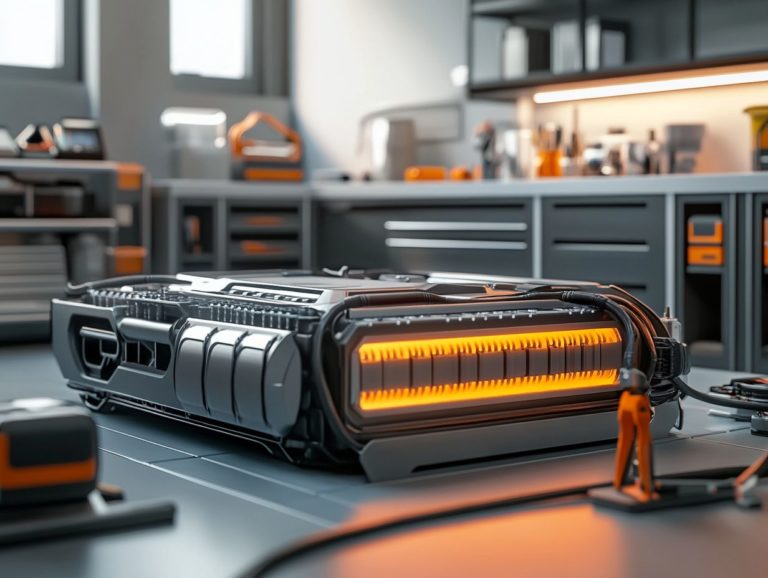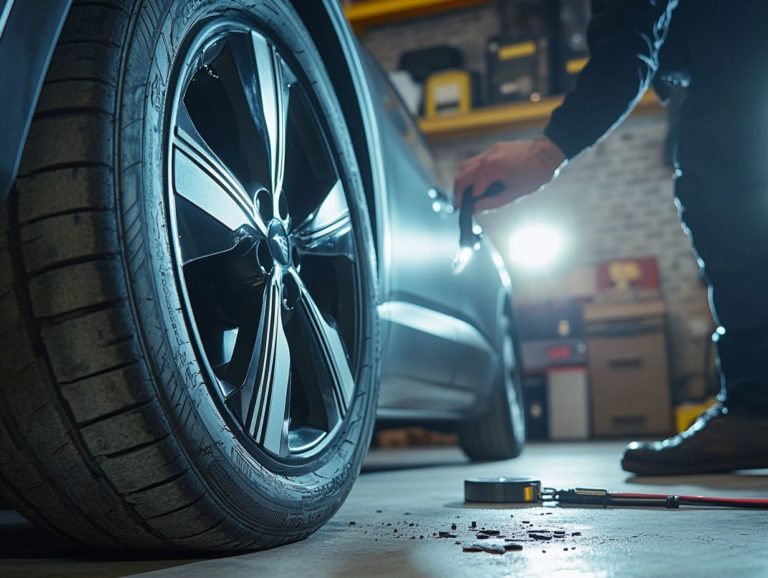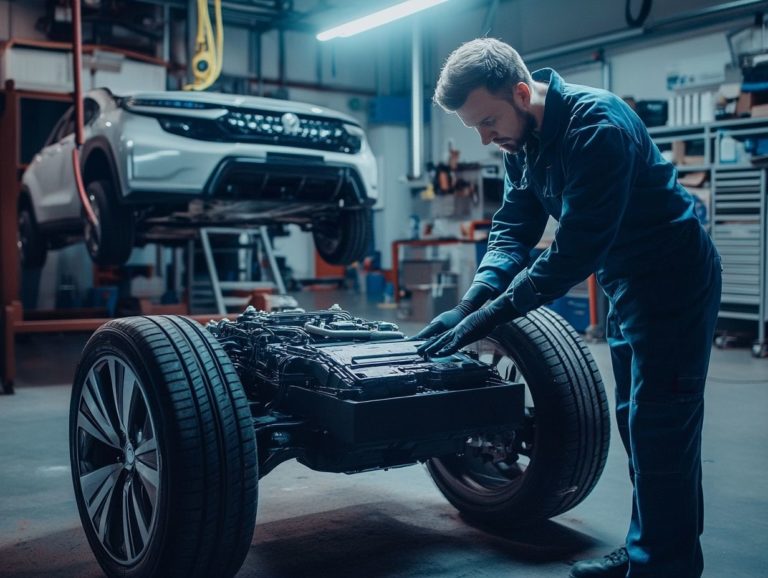signs your ev needs immediate attention
Electric vehicles (EVs) have revolutionized how we view transportation, presenting an eco-friendly alternative to conventional combustion engines.
Like any vehicle, your EV may face challenges that demand prompt attention.
This article covers signs your EV might be having problems. Look out for warning lights, strange noises, or a drop in performance.
You will discover immediate steps to take when these signs appear, along with valuable maintenance tips to prevent future problems.
Stay alert! Your EV deserves seamless operation!
Contents
Key Takeaways:
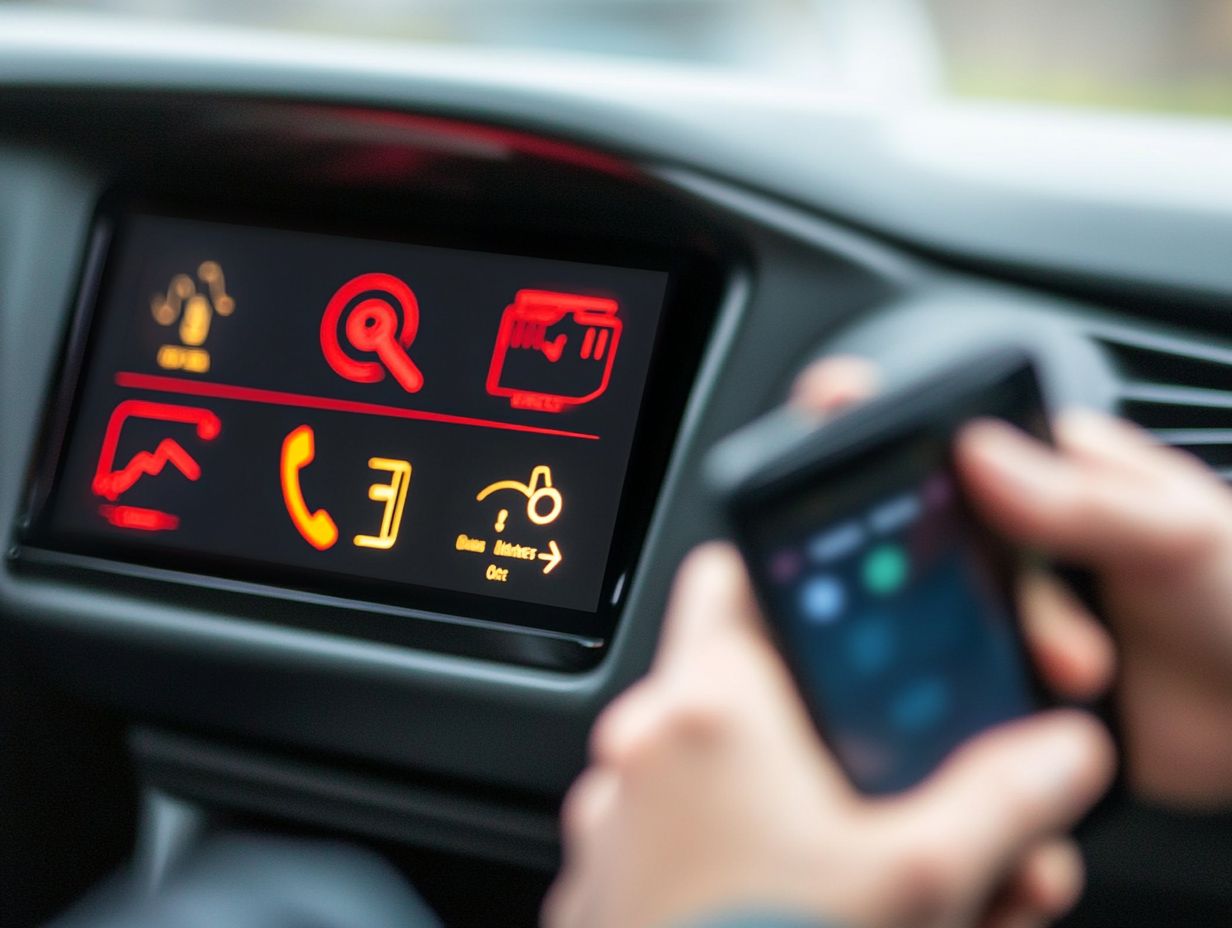
- Keep an eye on warning lights; they are your first alert to issues.
- If you notice unusual noises or vibrations while driving your EV, seek professional help immediately.
- Regular maintenance can prevent future issues and extend your EV’s lifespan.
What are EVs?
Electric vehicles (EVs) signify a transformative leap in automotive technology, operating primarily on electricity instead of traditional engines that use gasoline. This shift not only presents you with a more sustainable choice as an EV owner but also drastically lowers your maintenance costs compared to gasoline-powered vehicles.
With models like the electric Renault Zoe, Tesla, Jaguar I-Pace, and Volvo XC40, more consumers recognize the advantages of electric cars for both daily commutes and long-distance journeys.
This growing trend is not just about convenience; it s a commitment to environmental sustainability and economic efficiency that you can be part of.
Common Signs of EV Problems
Spotting signs of EV problems is key to keeping your ride smooth. Being aware of warning lights and indicators on your dashboard allows you to address potential issues before they escalate.
Also, pay attention to unusual noises or vibrations, as well as any noticeable drop in performance; these can indicate the need for prompt EV servicing.
By staying proactive, you can ultimately save on future maintenance costs and ensure your driving experience remains exceptional.
Warning Lights and Indicators
Warning lights and indicators in your electric vehicle are essential tools that alert you to potential issues needing your attention. If you own a Tesla, you likely rely on your dashboard alerts to keep tabs on battery health, charging status, and system malfunctions, helping you minimize costly maintenance expenses.
These visual cues cover a spectrum of functions, from simple reminders like low tire pressure to more critical signals indicating overheating or faulty brake systems. When you encounter such warnings, it s crucial to consult your vehicle s manual to interpret the specific alert accurately.
Depending on the situation, you may need to pull over safely and seek assistance from EV servicing professionals to diagnose any underlying problems. Regular maintenance checks and software updates can significantly reduce the likelihood of those warning indicators cropping up unexpectedly, allowing you to enjoy a safer driving experience.
Unusual Noises or Vibrations

Experiencing unusual noises or vibrations in your electric vehicle could signal underlying mechanical or electrical issues that require your immediate attention. Unlike traditional gasoline-powered vehicles, EVs tend to operate quietly, so any sudden changes in sound or feel should prompt you to conduct a thorough inspection to prevent escalating maintenance costs.
Common sounds like grinding, squeaking, or clunking may indicate problems with your brakes, motor mounts, or suspension components. Vibrations could suggest misalignment, tire imbalances, or even complications with battery mounts or drivetrain elements.
It s crucial not to overlook these symptoms, as ignoring them could lead to more significant and potentially costly damage down the line. Regular servicing is essential to identify any emerging issues early, promoting the longevity and efficiency of your vehicle.
By staying vigilant, you can maintain your electric vehicle’s performance, ensuring a smooth ride while minimizing repair expenses.
Decreased Performance
Decreased performance in your electric vehicle can appear as reduced acceleration, a shorter battery range, or sluggish responsiveness. These factors can truly dampen your driving experience.
Recognizing these performance dips early is essential for private EV owners. They often signal the need for servicing or battery maintenance to preserve efficiency and keep future maintenance costs in check.
Regular checks enable you to ensure optimal performance by monitoring vital components like battery health, the charging system, and the electric drive unit.
Various factors can contribute to diminished capability, including wear and tear on electrical connections, software glitches, and even seasonal variations affecting battery efficiency.
Act quickly to service your vehicle before small issues become big problems, as these issues can escalate if left unattended.
By staying proactive with your maintenance, you can enhance your vehicle’s longevity, maintain battery integrity, and ultimately enjoy a smoother, more reliable driving experience.
Immediate Actions to Take
When you encounter potential issues with your electric vehicle, knowing the immediate steps to take is essential for maintaining both safety and performance.
Recognizing when to seek professional assistance or identifying emergency situations can significantly reduce risks and minimize maintenance costs.
If warning lights illuminate or you begin to hear unusual noises, reach out to EV servicing professionals immediately. This can help avert more serious problems in the future.
When to Seek Professional Help
Knowing when to enlist professional help for your electric vehicle can save you from hefty maintenance costs and keep your car in peak condition.
If you notice ongoing warning signs like dashboard alerts, odd noises, or a dip in performance it is vital to consult qualified EV servicing technicians. They have the expertise to accurately diagnose and resolve any issues.
Pay special attention to symptoms such as reduced battery range, which could indicate problems with the battery management system, or inconsistent charging speeds that might suggest a fault in the charging port.
Timely intervention extends the life of your electric components and enhances safety, especially if your vehicle shows signs of malfunctioning brakes or compromised electrical systems.
Regular check-ups by professionals well-versed in electric vehicle maintenance are crucial for spotting potential problems before they escalate. This ensures your EV remains efficient and reliable for years to come.
Emergency Situations
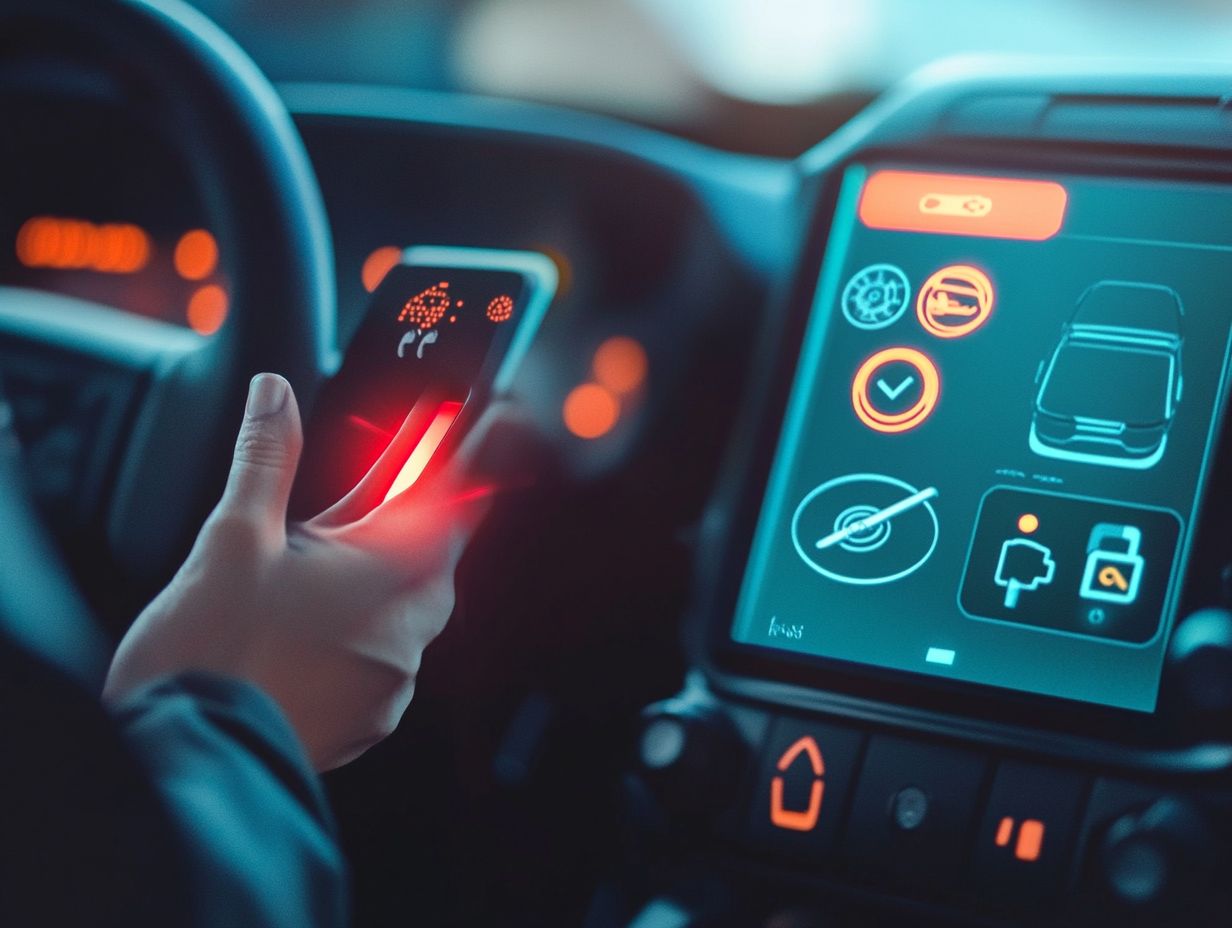
In emergencies involving your electric vehicle, immediate and appropriate actions are essential for ensuring your safety and minimizing potential damage.
If you own a Tesla or any other EV, it is crucial to know how to safely pull over, assess the situation, and determine when to contact emergency services or professional help.
If you encounter a battery failure while on the road, your first step is to ensure your vehicle is safely off the roadway to avoid further danger. Next, check your dashboard for warning lights or error messages that might help diagnose the issue.
If things take a serious turn like smoke or unusual noises prioritize your safety by evacuating the vehicle and alerting emergency services.
In the unfortunate event of an accident, knowing the proper procedures is paramount. Ensure your personal safety and exchange information with other parties involved.
Know the locations of charging stations and have a contingency plan for roadside assistance. This will enable you to navigate potential emergencies effectively.
Preventing Future Issues
Preventing future issues with your electric vehicle is crucial for maximizing its lifespan and minimizing maintenance costs.
By adhering to regular maintenance practices such as routine checks of battery health, brake pads, and software updates you can significantly enhance the longevity of your electric vehicle.
This proactive approach ensures that your EV operates efficiently and reliably for years to come.
Regular Maintenance Tips
Regular maintenance for your electric vehicle helps prevent issues and save money.
Unlike gasoline-powered cars that need oil changes, your electric vehicle mainly requires checks on brake pads and battery health. This proactive approach extends the lifespan of key components and enhances your driving experience.
Check your brake pads often. Electric vehicles use regenerative braking, which affects wear differently than you might expect.
Proper tire maintenance, including rotation and pressure checks, boosts safety and efficiency, maximizing your mileage.
Monitor your battery’s health through software diagnostics to catch problems early. This preserves both range and performance.
Keeping your vehicle s software updated ensures all systems run smoothly for a better ride. Following these practices means you can enjoy a reliable electric vehicle for years.
How to Extend the Life of Your EV
To extend your electric vehicle’s life, adopt practices that enhance performance and reduce wear.
Utilizing regenerative braking efficiently boosts your driving efficiency and lowers maintenance costs. This is vital for all EV owners.
Mindful driving habits, such as avoiding rapid acceleration and hard braking, reduce strain on the battery and mechanical parts.
Regular maintenance checks like software updates and tire rotations keep your EV operating at its best.
Understanding features like smart charging helps you optimize battery health and enhances longevity. These actions lead to a more durable and eco-friendly driving experience.
Frequently Asked Questions
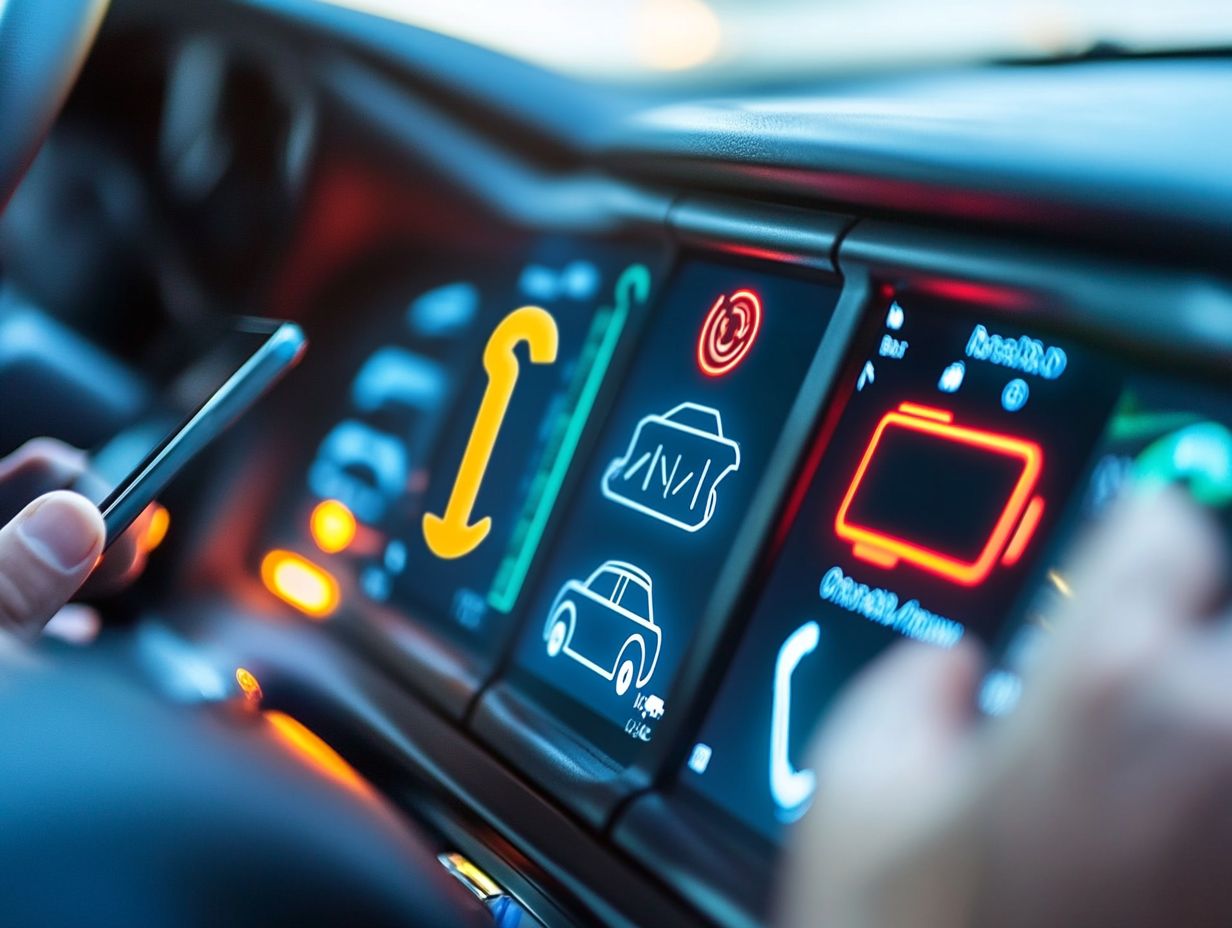
Signs Your EV Needs Immediate Attention
Look for unusual noises, warning lights on the dashboard, decreased performance, or trouble starting. These may signal that your EV needs urgent care.
Does Your EV’s Battery Need Attention?
If your battery is failing, you might notice reduced range, trouble holding a charge, or needing to recharge often. Address these issues quickly to avoid being stranded.
What to Do About Warning Lights?
Take action when warning lights appear. They may indicate issues with the battery, motor, or other important parts. Stop driving and consult a professional.
Can You Drive if Warning Lights Come On?
It’s best not to drive your EV if warning lights show. Continuing could worsen the problem and increase the risk of getting stranded. Seek professional help instead.
How to Prevent Future Issues?
Follow the manufacturer s maintenance schedule for your EV. This includes regular check-ups and addressing any warning signs promptly.
Is It Normal for an EV to Need Attention?
While EVs are generally reliable, they can still have issues that need immediate attention. Regularly monitor performance and address any warning signs quickly to prevent serious problems.

